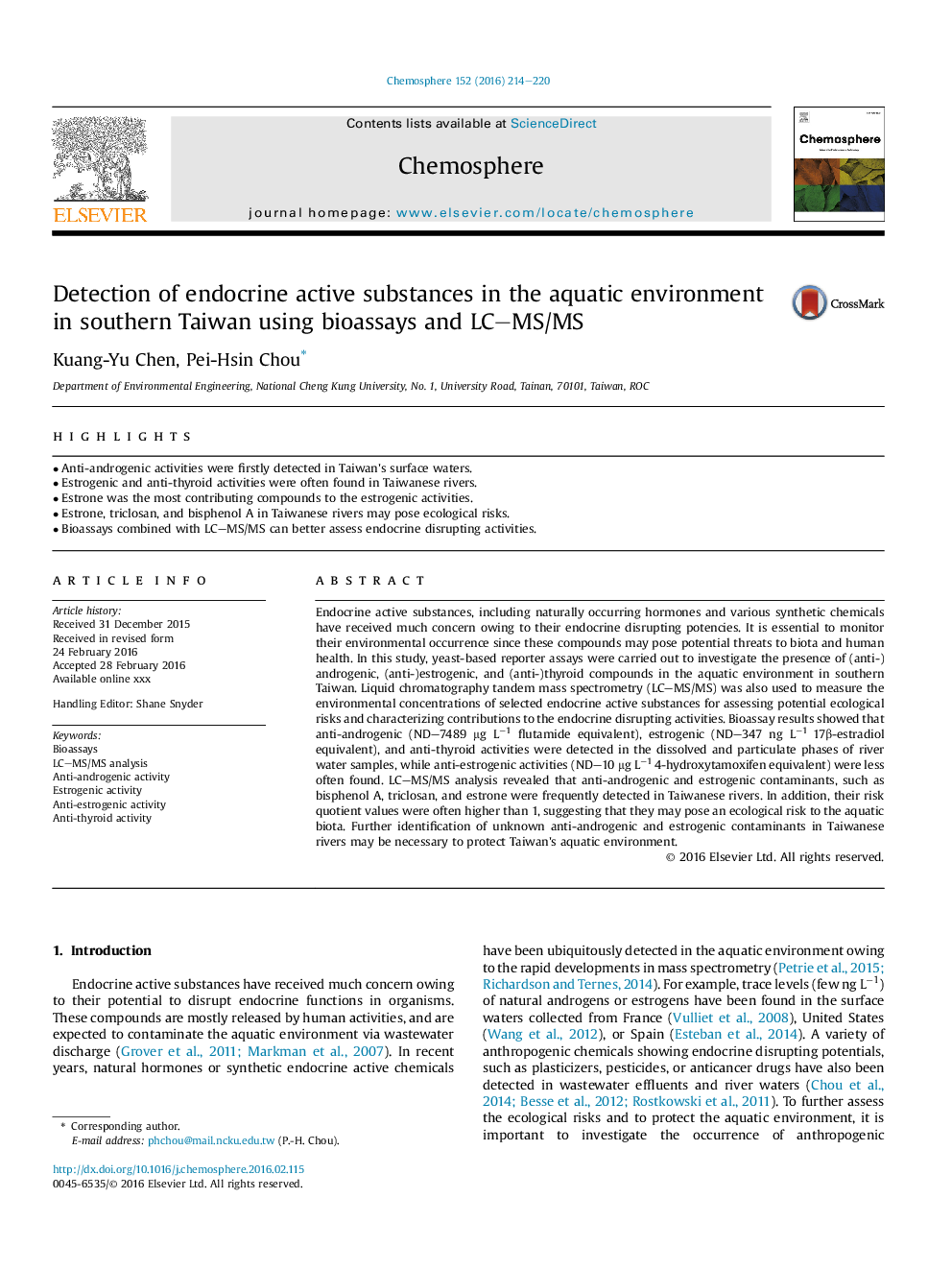| Article ID | Journal | Published Year | Pages | File Type |
|---|---|---|---|---|
| 6307002 | Chemosphere | 2016 | 7 Pages |
Abstract
Endocrine active substances, including naturally occurring hormones and various synthetic chemicals have received much concern owing to their endocrine disrupting potencies. It is essential to monitor their environmental occurrence since these compounds may pose potential threats to biota and human health. In this study, yeast-based reporter assays were carried out to investigate the presence of (anti-)androgenic, (anti-)estrogenic, and (anti-)thyroid compounds in the aquatic environment in southern Taiwan. Liquid chromatography tandem mass spectrometry (LC-MS/MS) was also used to measure the environmental concentrations of selected endocrine active substances for assessing potential ecological risks and characterizing contributions to the endocrine disrupting activities. Bioassay results showed that anti-androgenic (ND-7489 μg Lâ1 flutamide equivalent), estrogenic (ND-347 ng Lâ1 17β-estradiol equivalent), and anti-thyroid activities were detected in the dissolved and particulate phases of river water samples, while anti-estrogenic activities (ND-10 μg Lâ1 4-hydroxytamoxifen equivalent) were less often found. LC-MS/MS analysis revealed that anti-androgenic and estrogenic contaminants, such as bisphenol A, triclosan, and estrone were frequently detected in Taiwanese rivers. In addition, their risk quotient values were often higher than 1, suggesting that they may pose an ecological risk to the aquatic biota. Further identification of unknown anti-androgenic and estrogenic contaminants in Taiwanese rivers may be necessary to protect Taiwan's aquatic environment.
Keywords
Related Topics
Life Sciences
Environmental Science
Environmental Chemistry
Authors
Kuang-Yu Chen, Pei-Hsin Chou,
